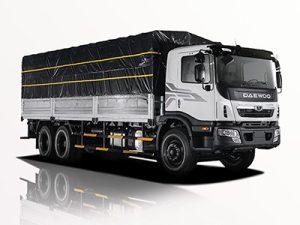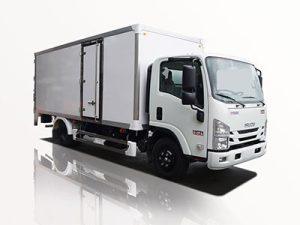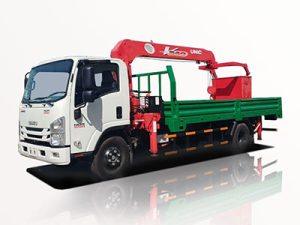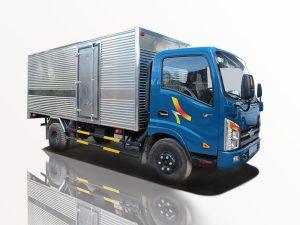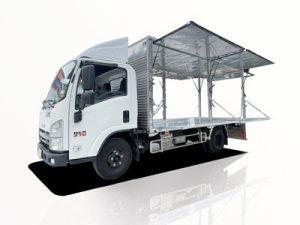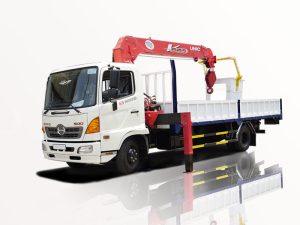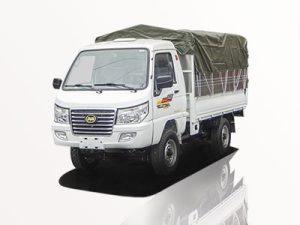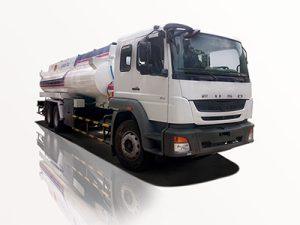Monday to Saturday - 8:00 -17:30
Exploring Different Fire Trucks: Types, Features, and Functions
Fire trucks, an essential part of firefighting operations, come in various shapes and sizes, each designed to perform specific functions in emergencies. Understanding the different fire truck types can help communities appreciate the role these vehicles play in ensuring public safety. In this article, we will explore the various types of fire trucks, their features, and their unique purposes. Whether you’re a fire service enthusiast or simply curious about these vital machines, this comprehensive guide will provide you with valuable insights.
1. The Role of Fire Trucks in Emergency Services
Fire trucks are critical in managing emergencies, primarily fires. However, their role extends beyond just extinguishing flames. They also aid in rescue operations, hazardous material containment, and medical emergencies. Fire trucks are equipped with a range of tools and technologies designed to ensure the safety of both firefighters and the public.
2. Types of Fire Trucks
2.1. Pumpers
Pumper trucks, or engine trucks, are the most common firefighting vehicles. They are primarily designed to transport water and pump it to the fire scene.
Features of Pumper Trucks:
- Water pump with a capacity typically ranging from 500 to 2,000 gallons per minute.
- Water tank containing between 500 and 1,500 gallons of water.
- Hoses and nozzles for firefighting.
- Storage compartments for firefighting equipment.
Example of a Pumper Truck:
One notable example of a pumper truck is the E-One Typhoon, which has a 1,500 GPM pump and a 750-gallon water tank, making it suitable for various fire responses.
2.2. Ladder Trucks
Ladder trucks are equipped with extendable ladders that can reach heights up to 100 feet or more. These vehicles are vital for rescue operations in multi-story buildings.
Characteristics of Ladder Trucks:
- Telescoping ladder with aerial capabilities.
- Waterway integrated into the ladder for aerial firefighting.
- Spotlight and scene lighting for night operations.
Example of a Ladder Truck:
The Pierce Ascendant 100’ Ladder is a popular model, designed for quick deployment and equipped with a 1,750 GPM pump and a 500-gallon tank.
2.3. Aerial Platforms
Aerial platform trucks feature a larger platform on the end of the ladder, enabling firefighters to safely carry out rescues and extinguish fires from significant heights.
Key Features of Aerial Platforms:
- Stable platform for multiple firefighters and equipment.
- Can reach heights of over 100 feet.
- 360-degree rotation for maneuverability.
Example of an Aerial Platform Truck:
The Spartan ERV 107’ Aerial Platform boasts an extensive working height and a large platform, ideal for high-rise firefighting operations.
2.4. Rescue Trucks
Rescue trucks are equipped with specialized equipment for various emergency scenarios, from vehicle extrications to medical emergencies.
Features of Rescue Trucks:
- Cutting tools like the Jaws of Life for vehicle extrication.
- Medical equipment including stretchers and defibrillators.
- Storage for rescue gear and tools.
Example of a Rescue Truck:
The Ford F-Series Rescue is a versatile truck well-equipped to handle various emergencies, ensuring rapid response times.
2.5. Tanker Trucks
Tanker trucks are designed for transporting large amounts of water to fire scenes, especially in areas without hydrants.
Characteristics of Tanker Trucks:
- Tank capacity can range from 1,000 to 10,000 gallons.
- Pumping capabilities to discharge water at the scene.
- Ability to supply water to multiple fire pumps simultaneously.
Example of a Tanker Truck:
The Rosenbauer Tanker is a well-known model with a 3,000-gallon capacity and a pumping capability of up to 1,000 GPM.
2.6. Wildland Fire Engines
Wildland fire engines are specially designed for fighting fires in rural and woodland areas, often featuring off-road capabilities.
Features of Wildland Fire Engines:
- 4×4 drive capabilities for rugged terrain.
- Smaller water tanks compared to traditional fire trucks (typically 300-750 gallons).
- Real-time communication devices to coordinate with air support.
Example of a Wildland Fire Engine:
The Type 6 wildland engine is a popular choice, designed for easy maneuverability and equipped with a 300-gallon tank.
2.7. Foam Trucks
Foam trucks are specifically designed to combat flammable liquid fires, utilizing foam to smother the flames.
Characteristics of Foam Trucks:
- Specialized foam systems capable of mixing and applying fire-fighting foam.
- Enhanced pumps designed for foam application.
- Storage for various types of foam concentrates.
Example of a Foam Truck:
The Oshkosh Striker is an advanced foam truck commonly used at airports, equipped with high-capacity foam systems.
2.8. Brush Trucks
Brush trucks are compact vehicles designed to tackle small fires in brush or grassland areas, often utilized by fire departments in rural settings.
Features of Brush Trucks:
- 4×4 capabilities for navigating rough terrain.
- Smaller water tanks (typically 200-500 gallons).
- Firefighting pumps for quick response to wildfires.
Example of a Brush Truck:
The Ford F-550 Brush Truck is commonly utilized by fire departments for its off-road capability and compact size.
3. Features that Differentiate Fire Trucks
3.1. Equipment and Gear
Fire trucks are equipped with various tools and gear that enhance their functionality. From hoses, ladders, and water tanks to specialized equipment for rescues and medical emergencies, the gear varies significantly across different types of fire trucks.
3.2. Engine and Pump Capabilities
Different types of fire trucks have varying pumping capabilities and engine sizes, which determine their effectiveness in firefighting and rescue scenarios. Pumper trucks generally have more powerful pumps compared to rescue or brush trucks.
3.3. Size and Maneuverability
Size plays a critical role in a fire truck’s ability to maneuver in specific environments. For instance, brush trucks are smaller and more agile, allowing them to navigate narrow trails in wooded areas, whereas ladder trucks are larger and designed for urban environments.
4. The Importance of Fire Truck Maintenance
Regular maintenance of fire trucks is essential for ensuring they operate effectively during emergencies. This includes routine inspections of the engine, pump systems, hoses, and all onboard equipment.
4.1. Scheduling Regular Inspections
Fire departments should schedule regular inspections at least twice a year to check for wear, functionality, and any needed repairs.
4.2. Staff Training on Maintenance
Training firefighters to maintain and operate fire trucks ensures they are familiar with all equipment and can quickly identify issues during an emergency.
5. Fire Truck Innovations and Technology
5.1. GPS and Mapping Systems
Modern fire trucks are now equipped with GPS and mapping systems, enabling firefighters to find the quickest routes to emergencies.
5.2. Communication Systems
Advanced communication technologies allow fire crews to coordinate with each other and with dispatching centers, improving response times and operational efficiency.
5.3. Enhanced Safety Features
Newer fire trucks come with enhanced safety features such as rollover prevention systems, backup cameras, and improved ergonomic designs for firefighters to ensure their safety during operations.
6. Fire Truck Safety Protocols
Safety is paramount for firefighters, and fire trucks are designed with various safety protocols and equipment to protect both the crew and the public.
6.1. Use of Personal Protective Equipment (PPE)
Firefighters should always wear appropriate PPE when operating fire trucks, including helmets, gloves, and turnout gear.
6.2. Safety Training for Crews
Regular safety training sessions ensure that every crew member knows how to operate the vehicle safely and respond to emergencies effectively.
6.3. Safe Driving Practices
Training on safe driving practices for fire trucks, especially during emergencies, is crucial to prevent accidents and ensure a quick response.
7. The Community’s Role in Fire Safety
Community involvement in fire safety can enhance firefighting efforts and awareness. Educating the public about fire safety can lead to better-prepared communities.
7.1. Organizing Fire Safety Workshops
Local fire departments can conduct workshops to educate citizens on fire prevention, evacuation plans, and the importance of reporting fires promptly.
7.2. Encouraging Volunteer Firefighters
Communities can benefit from recruiting and training volunteer firefighters, who can support local fire departments during emergencies, especially in rural areas.
8. Future Trends in Firefighting Technology
8.1. Emphasis on Sustainability
As environmental concerns grow, fire truck manufacturers are focusing on more sustainable practices, including electric fire trucks and eco-friendly firefighting agents.
8.2. Advancements in Fire Suppression Systems
Innovative fire suppression technologies are being developed to improve efficiency and effectiveness in combating fires while minimizing damage.
FAQ Section
What is the average lifespan of a fire truck?
The average lifespan of a fire truck is typically between 10 to 15 years, depending on usage and maintenance.
How much water can a pumper truck hold?
Pumper trucks can hold anywhere from 500 to 1,500 gallons of water, depending on the model and department requirements.
What is the difference between a ladder truck and a pumper truck?
A ladder truck is primarily equipped with an extendable ladder for accessing high places, whereas a pumper truck is mainly designed to deliver water and suppress fires.
What is a wildland fire engine?
A wildland fire engine is a firefighting vehicle specifically designed for fighting fires in rural and wooded areas, often featuring off-road capabilities and smaller water tanks.
Can fire trucks respond to medical emergencies?
Yes, many fire trucks are equipped with medical supplies and personnel trained to respond to medical emergencies as part of their services.
How do fire departments choose the right fire truck for their needs?
Fire departments assess their community’s needs, response areas, and specific challenges to determine the appropriate types of fire trucks that will best serve their functions.


